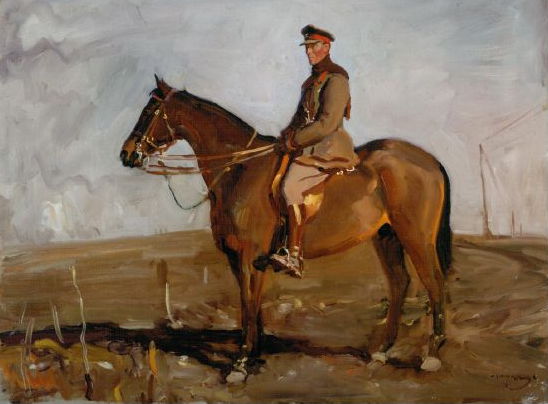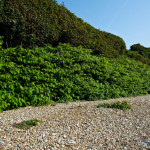This in from English Heritage, in their own words. Ed
Commissioned by the Seely family from celebrated equine sculptor, Philip Blacker, the half size bronze depicts General Jack Seely astride Warrior, whose newspaper obituary read ‘the horse the Germans could not kill.’
It has been loaned to English Heritage for the duration of the First World War centenary and accompanies the current Carisbrooke Castle Museum exhibition, Men and Horses Go to War.
History of Warrior
Warrior was bred on the Isle of Wight, went to France with General Jack Seely on one of the first boats in August 1914 and survived four years on the Western Front leading the famous last cavalry charge at Moreuil Wood in March 1918.
He returned home safe and sound and four years to the day of the Moreuil Wood charge, won the Isle of Wight point to point. He lived to the grand age of 33, an almost unbelievable feat when eight million other horses and mules sadly became casualties of war.
Blacker worked from Munnings’ portrait
A book about Warrior’s life was first published in 1934 – and again in 2011- with original Sir Alfred Munnings pictures of the horse. It is the same famous Munnings picture of Jack Seely astride Warrior which has formed the basis for the Blacker Sculpture.
The Warrior statue will be located in the Princess Beatrice garden, adjacent to the Chapel of St Nicholas which has served as the Isle of Wight’s war memorial since after the First World War.
Brough Scott, author and grandson of Jack Seely says:
“It is both thrilling and appropriate that Warrior and my grand-father should now stand together in Carisbrooke Castle at the very centre of the Isle of Wight where they spent so many great times both before and after their war time adventures.
“I hope all those who come to see them will be as uplifted as we have in the re-telling of their unbelievable story.”
A remarkable story
English Heritage Senior Curator, Rowena Willard Wright agrees,
“The story of Warrior and General Jack Seely is remarkable. It is both a love story and a thriller, and a hundred years on, is as resonant, as it ever was. We are honoured to have been asked by the family to display this stunning work which we hope will engage visitors to Carisbrooke in a very unique and personal piece of England’s First World War history.”
David Thornton, CEO, Visit Isle of Wight meanwhile added:
“The centenary of World War 1 this year means that the installation of a statue of Warrior at Carisbrooke Castle is an extremely fitting and timely tribute.
“I’m sure that the work, which will be seen by thousands of visitors, will help to illustrate the Isle of Wight’s connections to the true story of the original Warhorse. It’ll be become another reason for planning a visit to the Island in general, and Carisbrooke in particular.”





